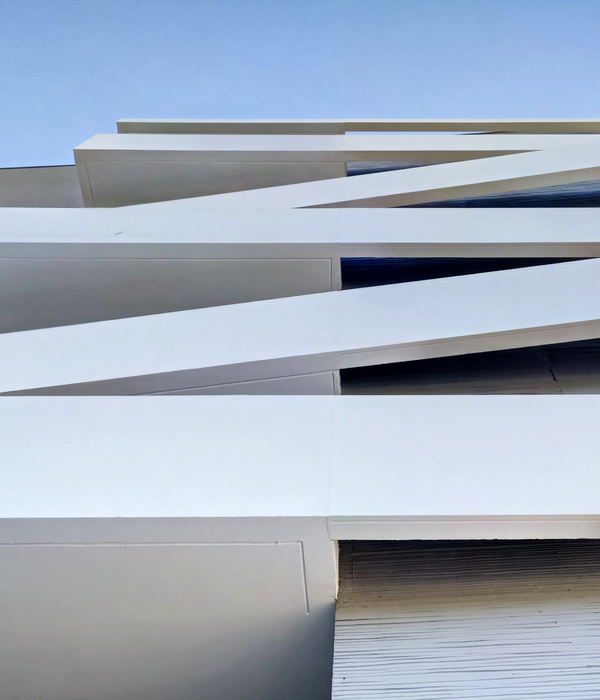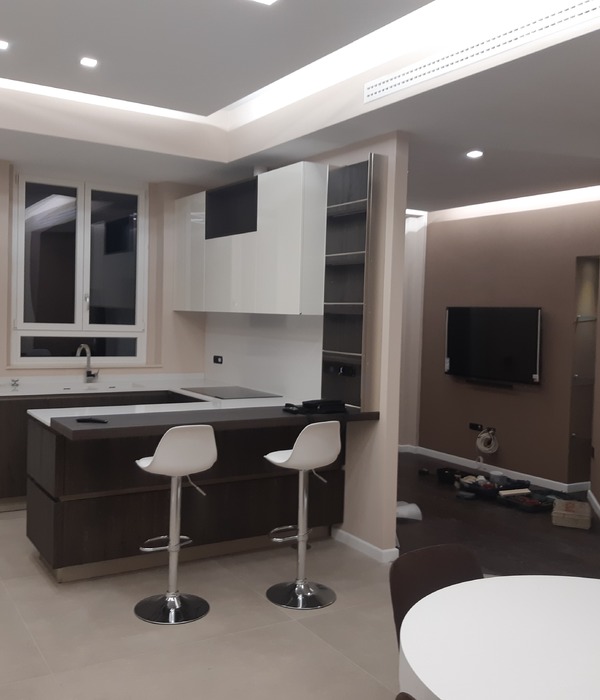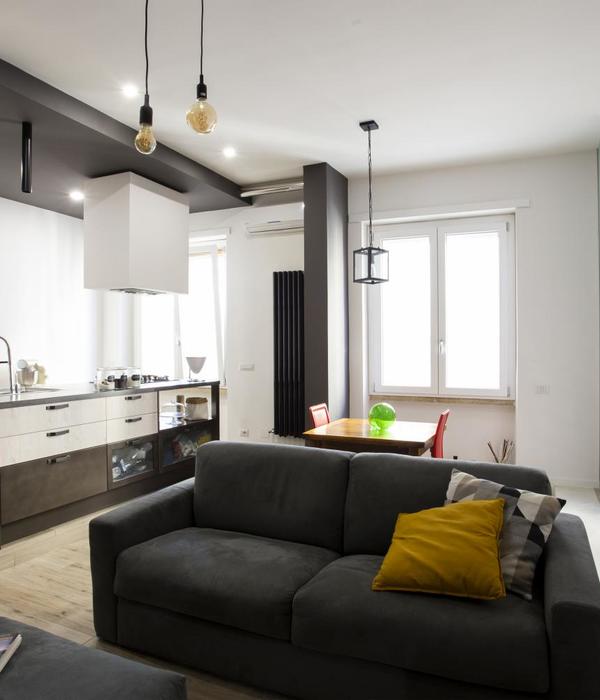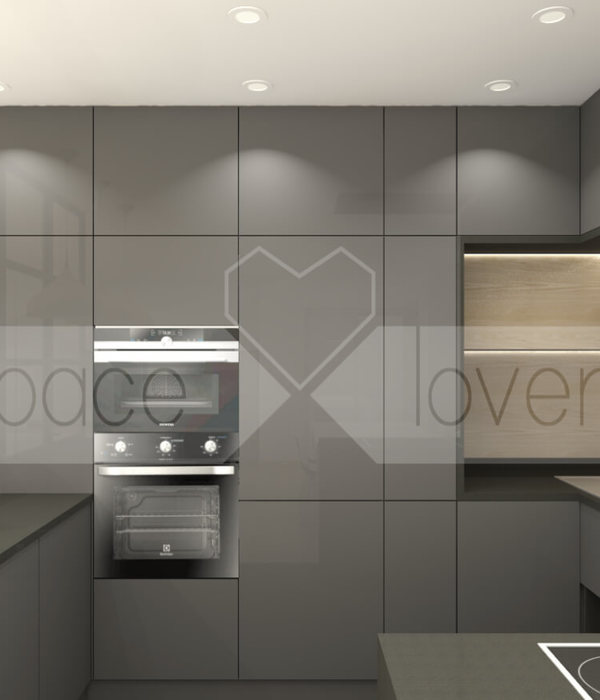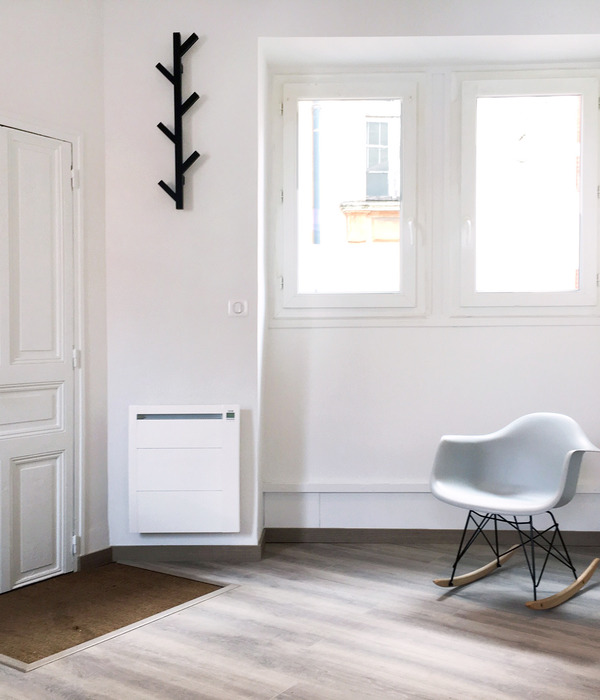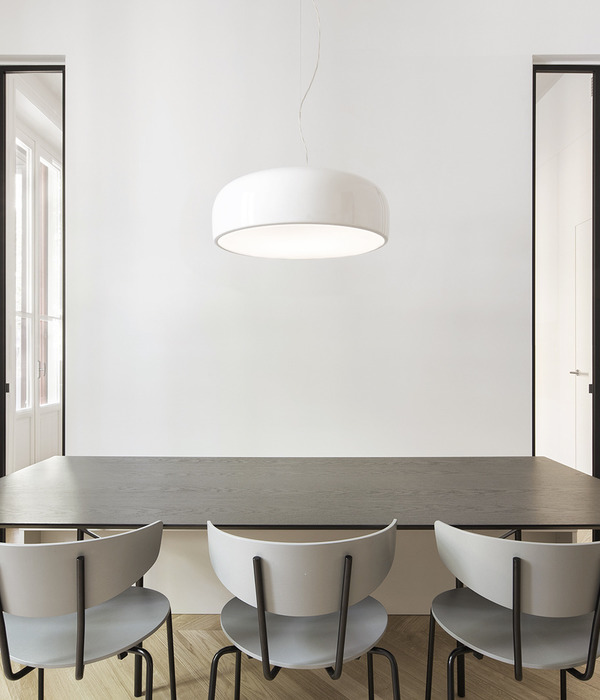15世纪初,年轻的威尼斯共和国迎来了前所未有的显赫时期-这是塞雷尼西马的“黄金时代”的前奏。在过去的几十年中,一连串的军事胜利将维罗纳和维琴察等大陆城市并入共和国,使这个海运城市国家成为意大利半岛上最强大的实体之一。从这些新的收购中获得的资源,再加上威尼斯令人印象深刻的贸易网络,证明是如此有利可图,到了14世纪20年代,威尼斯不仅正式成为意大利最富有的国家,也成为整个欧洲最富有的国家。
The early 15th Century saw a period of unprecedented prominence for the young Venetian Republic – a precursor to la Serenissima’s ‘Golden Age’. A succession of military victories in the preceding decades had absorbed the mainland cities of Verona and Vicenza into the Republic, transforming the maritime city-state into one of the most powerful entities on the Italian peninsula. The resources gained from these new acquisitions, combined with Venice’s impressive web of trade networks, proved so profitable that, by the 1420s, Venice was officially the wealthiest state in not only Italy, but the whole of Europe.[2]
在这种乐观的气氛中,马林·康塔里尼(MarinContarini)委托在城市大运河两岸建造他的新宫殿。康塔里尼家族是威尼斯最有影响力的贵族家族之一;事实上,在康塔里尼的领导下,共和国在1380年击败了热那亚。战斗结束后,该部族仍然是商业和政治事务的主要参与者。因此,人们期望马林的新家能象征性地、在身体上反映他家人的地位。
Amid this atmosphere of optimism, Marin Contarini commissioned the construction of his new palace on the banks of the city’s Grand Canal. The Contarini family were among the most influential of Venice’s noble families; indeed, it was under a Contarini’s leadership that the Republic had defeated Genoa in 1380. Following the battle, the clan remained a major player in both mercantile and political affairs. It was therefore to be expected that Marin’s new home would symbolically, and physically, reflect his family’s standing.[3]
© Jean-Pierre Dalbera
c Jean-Pierre Dalbera
它的大小将是这座新宫殿雄伟的第一个标志。中世纪的城市是密集、拥挤的空间,威尼斯-尽管它的形态不同,有超过10万居民-也不例外。[4]因此,能够在卡纳雷吉奥市中心买得起35×22米的场地,本身就是奢侈的。[5]然而,这座建筑最能体现财富和权力的方式也不例外。是通过宫殿的滨水立面实现的。
Its size was to be the first indicator of the new palazzo’s grandeur. Medieval cities were dense, crowded spaces, and Venice—although different in its morphological grain, with over 100,000 residents—was no exception.[4] Therefore, to be able to afford a site 35 by 22 meters in the heart of Cannaregio, was extravagant in itself.[5] The building’s greatest expression of wealth and power, however, was to be achieved through the palazzo’s waterfront facade.
和威尼斯的许多建筑一样,圣索菲亚宫主要是用砖块建造的,它比石头更轻、更便宜。当时的典型做法是用石灰灰泥覆盖砖结构,这提供了令人赏心悦目的装饰;然而,圣索菲亚宫的砖块却用大理石包裹起来。[6,7]难怪这座建筑的建造需要40个石匠的共同努力-其中一半的工匠参与了整个项目。这些石匠中最著名的是赞恩和巴托罗密欧·邦,他们是一对父子,他们将把自己的才华贡献给威尼斯各地众多的宫殿和市政建筑。
As with many buildings in Venice, the Palazzo Santa Sofia was primarily built using brick, which was lighter and cheaper to use than stone. Typical practice at the time was to cover brick structures with lime mortar, which provided an aesthetically pleasing finish; the bricks of the Palazzo Santa Sofia, however, were sheathed with marble.[6,7] It is perhaps no wonder that the building’s construction required the combined efforts of forty stonemasons – a full half of the craftsmen involved in the entire project. The most notable of these masons were Zane and Bartolomeo Bon, a father and son pair who would contribute their talents to a multitude of palazzi and civic structures throughout Venice.[8]
Ca‘Oro的图片,请访问快门。通过Shutterstock用户InavanHateren生成图像
几十个工匠在一个立面上工作了十多年,形成了一个复杂的装饰元素马赛克。装饰从一层到另一层不同,因为立面的工作是由两组石匠和两位不同的主人在不同的时间完成,然后在一个(不相关的)主建造者的监督下组装。某些元素,比如上层的栏杆或支撑地面拱廊的首都,都是从原先矗立在工地上的房子中回收出来的;其他的东西都是专门为新的宫殿雕刻的。
The combination of several dozen artisans working on a single facade for over a decade resulted in a complex mosaic of decorative elements. Embellishments differ from floor to floor, as work on the facade was completed by two groups of stonemasons with two different masters, all at different times, before being assembled under the supervision of an (unrelated) master builder. Certain elements, like the balustrades of the upper levels or the capitals supporting the ground level arcade, were recycled from the house that had previously stood on the site; everything else was carved specifically for the new palazzo.[9]
虽然这块石头很华丽,但它还不足以满足马林·康塔里诺的要求。这座宫殿的许多装饰元素,如屋顶上的装饰性水晶、柱头上的叶子以及其他各种雕塑细节,随后都被装饰成金叶。其他元素被描绘成蓝色、黑色、白色和红色的绚丽色彩,突出了下面的精美石材。蓝色油漆是巨大财富的标志,因为它是由从阿富汗进口的压碎的青金石制成的。威尼斯是黑色颜料进入欧洲的门户;这一商品被认为比黄金更有价值。[10]尽管如此,它的正面镀金将给人留下最持久的印象-即使它已经磨损了几个世纪,这座宫殿仍保留着绰号Ca D‘Oro-“黄金之家”(House Of Gold)。
As opulent as the stonework was, it was not enough to satisfy Marin Contarino. Many of the palazzo’s decorative elements, such as the spherical stone elements which top the ornamental crenellations at the roof line, the leaves on the capitals of columns, and various other sculptural details, were subsequently embellished with gold leaf. Other elements were painted in brilliant hues of ultramarine blue, black, white, and red, accentuating the fine stonework underneath. The ultramarine paint was a marker of great wealth, as it was made of crushed lapis lazuli imported from Afghanistan. Venice was the gateway through which ultramarine pigments entered Europe; the commodity was considered more valuable than gold.[10] Despite this, it was the gilding of the facade that would make the most lasting impression – even centuries after it has worn away, the palazzo retains the nickname Ca D’Oro—the ‘House of Gold’.[11]
Facade Elevation (Grand Canal). ImageUnknown Source
立面高程(大运河)图像未知源
运河外墙的铺张浪费与宫殿其他部分的相对紧缩形成了鲜明的对比。面对内院的墙壁没有大理石护套,因此暴露了房屋的砖墙结构。即使是在运河正面拐角处附近的东面墙也没有被发现,尽管从大运河本身就可以看到。由于这些门面并不是这所房子的大入口,所以它们的装饰优先级要低得多;除了一个通往院子的奇形怪状的大理石通道外,马林把他的绝大部分财产都倒进了运河正面。
The extravagance of the canal facade stands in stark contrast to the relative austerity of the rest of the palazzo. The walls facing the inner courtyard did not have marble sheathing, thereby exposing the brick structure of the house. Even the eastern wall just around the corner from the canal facade remained uncovered, despite being visible from the Grand Canal itself. As these facades did not serve as the grand entryways to the house, they were assigned much lower decorative priority; other than a fanciful marble gateway into the courtyard, Marin had poured the vast majority of his fortune into the canal facade.[12]
Courtesy of Flickr user saragoldsmith (CC BY 2.0)
Flickr用户提供的萨拉戈尔德史密斯(CC到2.0)
圣索非亚宫的内部结构是当时威尼斯大房子的典型。入室仪式不是在庭院门举行的,而是在地下拱廊后面的私人码头举行的。这座宫殿的大多数近邻都为同样的功能提供了一个相对温和的单一门户;因此,宽阔的拱廊不仅被视为拜占庭祖先的参照物,而且被视为一条引人注目的宏伟入口。底层的其余部分被仆人宿舍、储藏空间、庭院和马林的私人办公室占据。
The internal structure of the Palazzo Santa Sofia was typical for a great Venetian house of the period. Ceremonial entry to the house took place not at the courtyard gate, but at the private quay located behind the ground level arcade. Most of the palazzo’s contemporary neighbors offered a relatively modest single portal for the same function; thus, the wide arcade was seen not only as a reference to Byzantine forebears, but as a conspicuously grand entryway. The rest of the ground floor was taken up by servant quarters, storage space, the courtyard, and Marin’s personal office.
Courtesy of Flickr user HarshLight
Flickr用户Harshlight提供
上层,即Piani Nobili,居住在这座宫殿的主要生活区。只有庭院的外部楼梯才能到达,两层楼共用一个几乎相同的平面图:卧室、厨房、礼拜堂和门廊-所有这些都是从一个大厅散发出来的。这两层楼是如此相似-尤其是两层楼都提供了厨房-这表明,这两层楼中只有一层楼可能是马林的直系亲属打算使用的。最上层很可能是他的父亲或他的一个兄弟,这是威尼斯宫殿的典型布置。
The upper floors, or piani nobili, housed the main living areas of the palazzo. Accessible only by an exterior staircase in the courtyard, both floors shared an almost identical floor plan: bedrooms, kitchens, a chapel, and loggia – all radiating from a large great hall. That both floors were so similar—and especially that both supplied a kitchen—suggests that only one of the two may have been intended for use by Marin’s immediate family. It is likely that the uppermost floor was occupied by his father or one of his brothers, a typical arrangement for a Venetian palazzo.[13]
Courtesy of Wikimedia user Madpack
维基媒体用户Madpack提供的服务
圣索非亚宫的工程始于1420年,直到1436年才完全完工。马林·康塔里尼1456年去世后,这座房子被反复传给了他的后代,直到1791年最终被遗弃。[3]1846年,这座房子被流放的俄罗斯王子特鲁贝茨科伊(Troubetzkoy)收购,他把房子送给著名芭蕾舞演员玛丽·塔格利奥尼(Marie Taglioni在塔格利奥尼的领导下,这座宫殿遭到了灾难性的翻修;哥特式庭院楼梯被拆除,许多石制品-包括巴托罗密欧·邦的装饰井口-被出售。
Work on the Palazzo Santa Sofia began in 1420 and was not fully completed until at least 1436. After Marin Contarini’s death in 1456, the house was passed down repeatedly to his descendants until ultimately being abandoned in 1791.[3] It was acquired in 1846 by the exiled Russian Prince Troubetzkoy, who gifted it to famed ballerina Marie Taglioni. The palazzo was subject to disastrous renovations under Taglioni’s stewardship; the gothic courtyard staircase was demolished, and many pieces of stonework—including Bartolomeo Bon’s ornamental wellhead—were sold off.[14]
Courtesy of Wikimedia user Godromil
维基媒体用户Godromil提供
幸运的是,1894年,这座宫殿再次易手,成为乔治·弗兰切蒂男爵的所有权。正是男爵修复了塔格利奥尼所毁坏的大部分东西;他重建了庭院楼梯,拆除了许多著名外墙的改建,并恢复了已被出售的雕塑元素。[15]一旦他的修复工作完成,他将这座宫殿遗赠给意大利政府,并于1927年作为一座艺术画廊向公众开放。
Fortunately, the palazzo changed hands once more in 1894, entering the ownership of Baron Giorgio Franchetti. It was the Baron who would restore most of what Taglioni destroyed; he rebuilt the courtyard stairs, undid many of the alterations to the famed facade, and recovered the sculptural elements that had been sold away.[15] Once his restoration work was complete, he bequeathed the palazzo to the Italian government, and it was opened to the public as an art gallery in 1927.[16]
在经历了几个世纪的使用、虐待和重建之后,圣索菲亚宫现在成为威尼斯人共和国昔日辉煌的见证。虽然著名的镀金早已从它的外观褪色,华丽的石头作品和宽敞的公寓楼的宫殿改造后的博物馆仍然是一个中世纪帝国在其最高高度的奢侈设计的标志性例子。因此,可以说,历史证明了马林·康塔里尼宏伟计划的原意;他的金屋仍然是威尼斯最杰出的建筑之一。
After enduring centuries of use, abuse, and reconstruction, the Palazzo Santa Sofia now stands as a testament to the former glory of the Venetian Republic. While the famous gilding has long since faded from its facade, the ornate stonework and spacious apartments of the palace-turned-museum remain iconic examples of luxury design in a medieval empire at its greatest height. Thus, it can be said that history has vindicated the original intentions of Marin Contarini’s grand project; his House of Gold still stands as one of the most remarkable in all of Venice.
Graphite, watercolour and bodycolour on toned paper, 33.6 x 47.6 cm. Inscriptions: graphite, Casa d'Oro; brown ink, Ca d'Oro. / J. Ruskin 1845. Image Courtesy of Ruskin Foundation (RF 1590), Ruskin Library, Lancaster University
墨迹纸上的石墨、水彩和体色,33.6 x 47.6厘米。铭文:石墨,卡萨·德奥;棕色墨水,Ca‘Oro。/J.Ruskin 1845。罗斯金基金会(RF 1590)的形象礼貌-兰开斯特大学罗斯金图书馆
地点威尼斯,意大利分类房屋建造大师乔瓦尼邦设计团队巴托罗密欧邦项目年1430年照片让-皮埃尔达尔贝拉
Location Venezia, Italy Category Houses Master Builder Giovanni Bon Design Team Bartolomeo Bon Project Year 1430 Photographs Jean-Pierre Dalbera
{{item.text_origin}}


